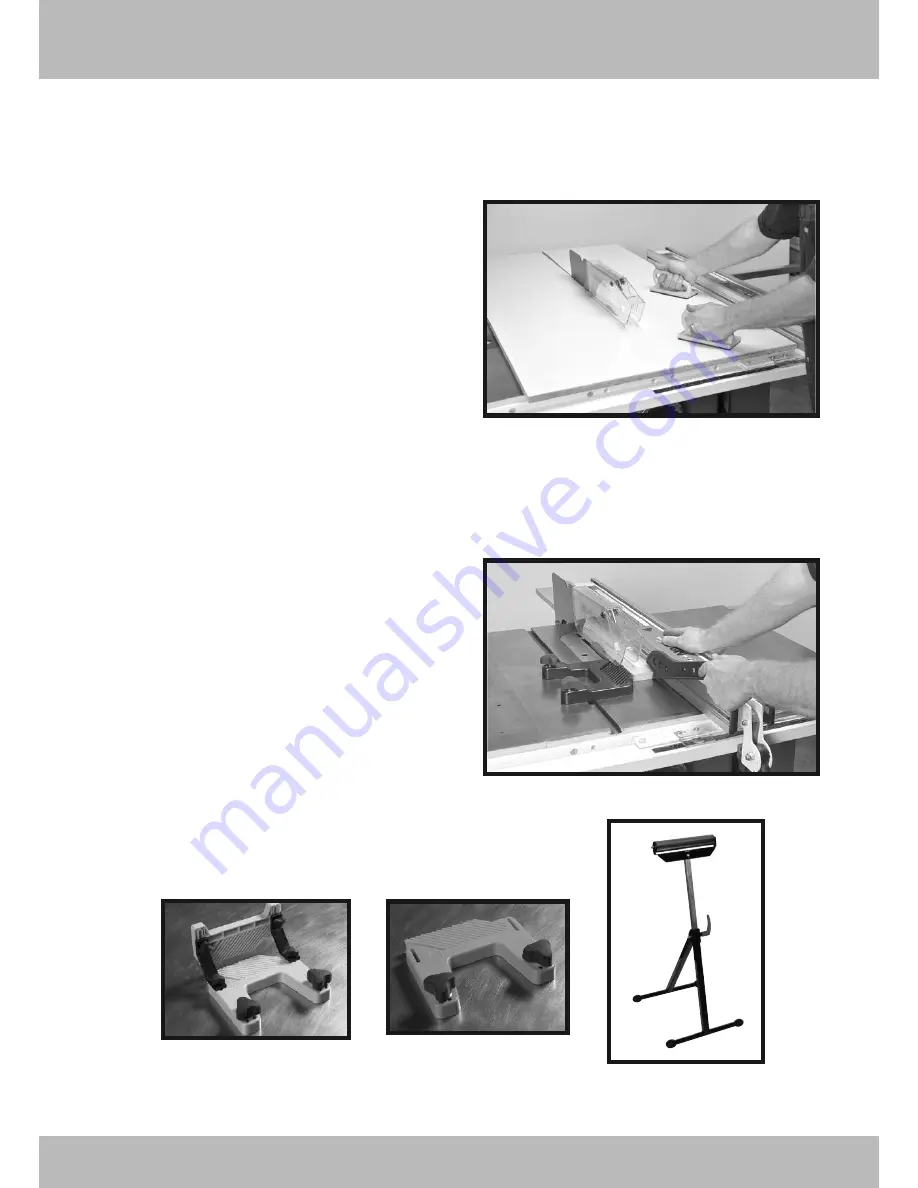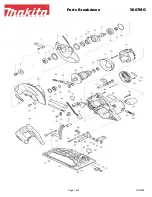
Ripping
Ripping is the operation of making a lengthwise cut
through a board, and the rip fence is used to position
and guide the work. One edge of the work rides
against the rip fence while the flat side of the board
rest on the table. Since the work is pushed along the
fence, it must have a straight edge and make solid
contact with the table. The saw guard should be used
for all through cutting operations. Some blade guards
have anti-kickback fingers and most include a splitter
to prevent the saw kerf (the gap left from the cutting
action) from closing and binding on the blade.
Start the motor and advance the work holding it down
and against the fence. Never, stand in the line of the
saw cut when ripping. Hold the work with both hands
and push it along the fence and into the saw blade.
The work can then be fed through the saw blade with
one or two hands. Using push blocks will help control
your workpiece and increase safety.
Thinner workpieces may require working close to the
saw blade. Use a thin push stick to feed the work
through between the fence and the blade. -Use safety
equipment, such as featherboards, to hold you
workpiece to your fence assembly.
Your workpiece once cut completely through, should
remain held on the table by the rear of the guard, or
the anti kickback fingers. Your workpiece may also
slide to the floor when you release your pressure. If
this is going to cause damage, take maesure to
prevent this happening by seeking assistance with a
person at the rear of the table saw, or by using a
portable saw stand to support the exiting workpiece.
Your off cut waste piece should also stay on the table,
tilt up slightly and be caught by the rear end of the
guard, or slide off the table to the floor. Remember to
switch off the saw. and wait for the blade to completely
stop, before removing the off cut.
Operations
www.carbatec.com.au
21
Summary of Contents for CTH-110L 1PH
Page 31: ...Notes www carbatec com au 31...












































